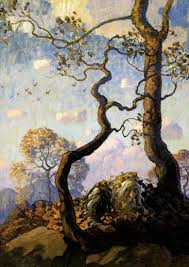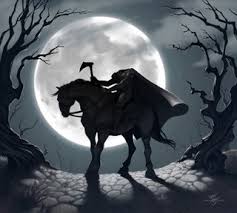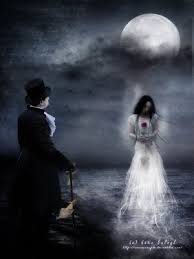
Washington Irving wrote two widely known and fantastical stories: "Rip Van Winkle" and "The Legend of Sleepy Hollow". Both stories are full of symbolism, metaphor, and societal conflicts. The story of "Rip Van Winkle" chronicles a lazy but kind man named Rip Van Winkle who basically hibernates through the prime of his life, in the post Revolutionary War-era. Upon awakening, he finds that the world has gone and changed on him, and the reader gets to experience the change behind the eyes of an objective man who had no part in the war.

His new life is a symbol for the confusion and anxiety the town must have felt during and after the war. Poor Rip does not know what to do with himself until his daughter takes him in and he realizes his is free from the nagging of his dead wife, his own wife being a metaphor for how England controlled the colonies and then lost that control. At the time in the story, society was going through some intense changes and everyone had to choose a side before and during the war. While the town Rip hailed from may have been quiet before, after the war the townsfolk were proud of their independence and eager to show it, especially to an unknowing loyalist like Rip, "[I am] a loyal subject of the king!"

The "Legend of Sleepy Hollow" tells the tale of Ichabod Crane and his run-in with the Headless Horseman, the supposed specter haunting the town of Sleepy Hollow. Icabod Crane's character can be interpreted as a metaphor for the religious, ignorant, and superstitious populace of the time period in which the story itself was written. His superstitions were the end of him and any chance he may have hoped to have for a successful marriage with the town bachelorette, Katrina Van Tassel. Had he been more discerning, he may have discovered that the Headless Horsemen was merely his competitor for Katrina's hand in marriage, Brom Bones. It is not expressly stated in the story that Brom is responsible for the disappearance of Ichabod, but Brom was "to look exceedingly knowing whenever the story of Ichabod was related,". The Headless Horsemen, or Brom, could have symbolized how the weak and superstitious were stamped out for strength and revolution. Societal conflicts in the story include the town and it's dark, superstitious nature. The Headless Horsemen and the belief that he was real was the pinnacle of the town's utter lack of scientific understanding.
Edgar Allen Poe and many of his writings also feature symbolism, metaphors, and societal conflicts. His epic poem, "The Raven" is a depressing tale featuring a raven that will not leave the narrator alone. The raven may symbolize death and eternity since throughout the poem it continually quotes, "Nevermore,". Another well-known poem by Poe is entitled "Annabel Lee". The poem opens with the lines, "It was many and many a year ago/ In a kingdom by the Sea/". Poe uses the second line over and over in the poem, hammering home the symbol of love and loss felt by the narrator in the poem. While the couple was happy in their home by the sea, they made of it a kingdom. Yet, once she died, the kingdom became a dark place full of her memory. The entire poem is a metaphor for fairy tales, obvious from the first line in the poem. It is a fairytale that strays from the traditional happy ending, something that Poe himself never obtained, a recurrent societal conflict in much of his literary work.

No comments:
Post a Comment